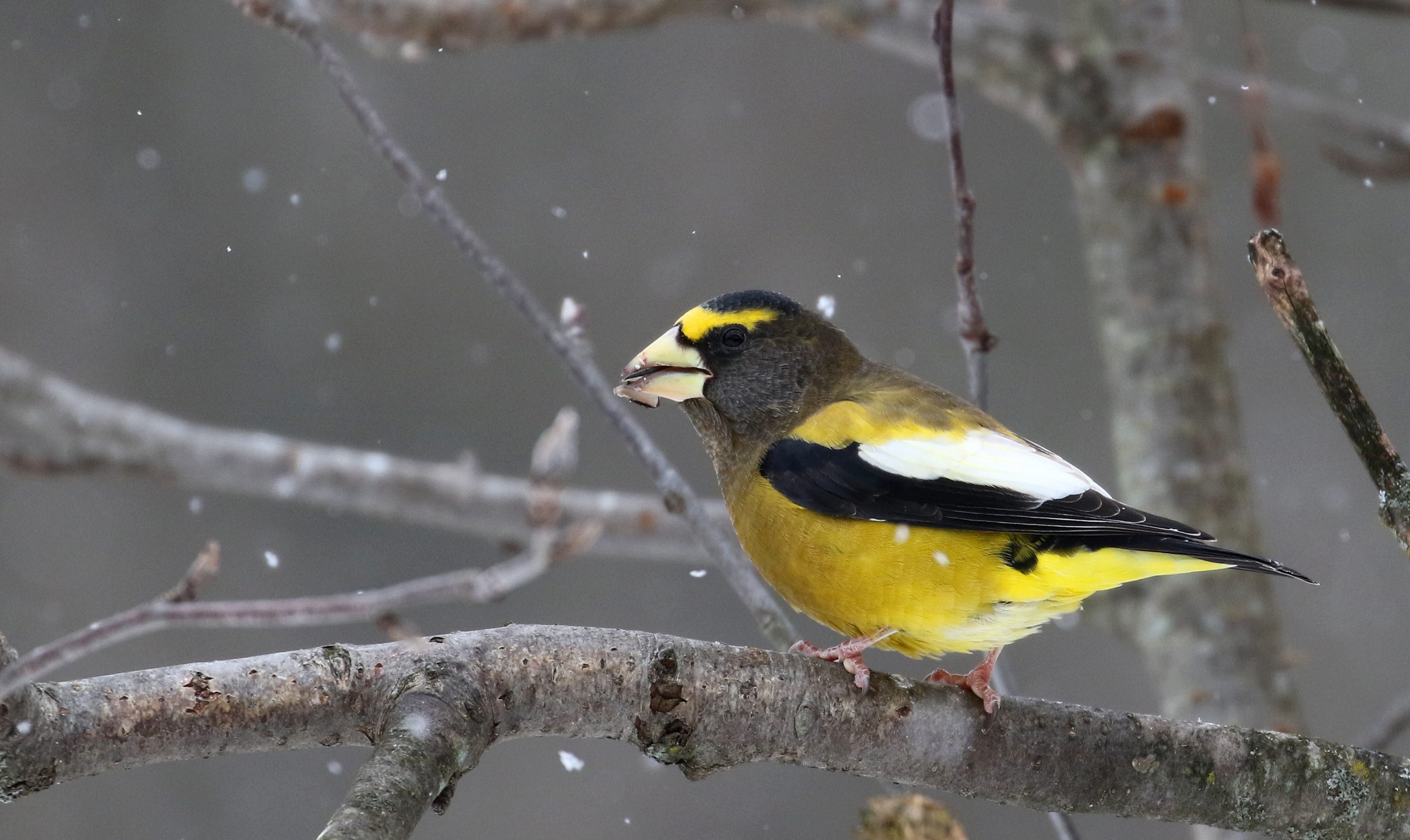Author Ryan Mandelbaum:
One rainy morning in early May, while checking my street trees for migratory songbirds, I heard a familiar, burry chirp—like a house sparrow with a sore throat. I knew immediately what I *wanted* the bird to be—an Evening Grosbeak—but the thought of seeing this vulnerable boreal finch from my second-story Brooklyn apartment seemed like an utter impossibility.
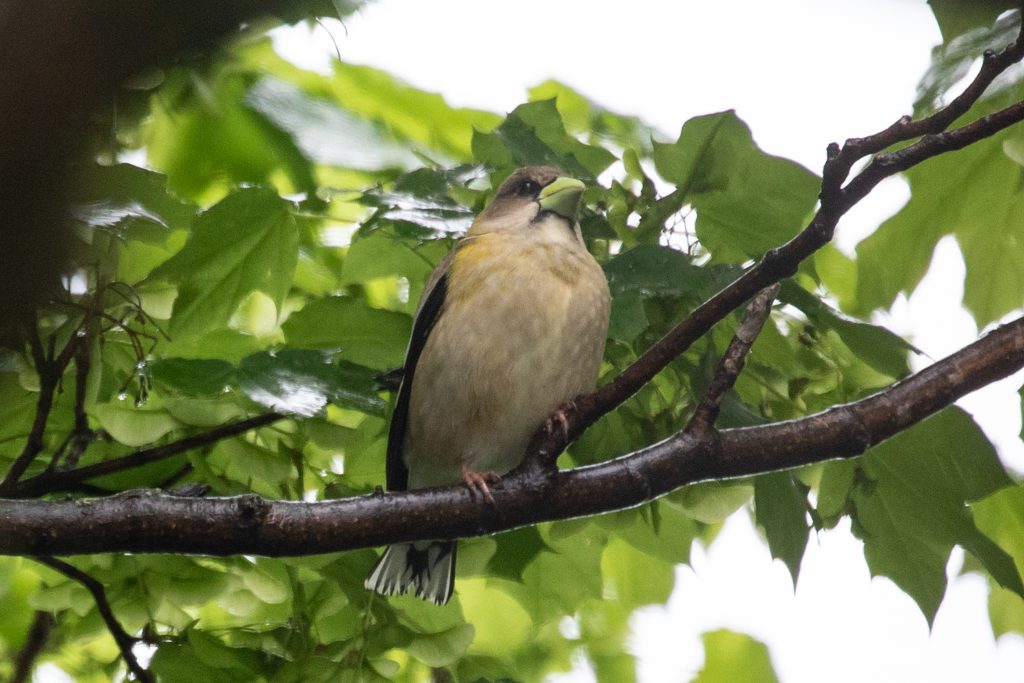
I headed outside to try and catch a glimpse, but the pin oak’s dense foliage blocked any chance of seeing the chirp’s owner. Then, a bird flew over my head, and repeated the call from the other side of the building. I ran back inside, stuck my head out of the kitchen window, and squinted into the backyard’s Norway Maple. I gasped when she hopped into view—indeed, a female Evening Grosbeak in her green-beaked glory had paid my urban apartment building a visit.
This year marked this species’ most notable irruption in the 21st century, with birders finding eastern Evening Grosbeaks as far south as Florida. Though rare in New York City in the past few decades, the city’s status as an infamous migrant trap made it a prime place to observe this year’s superflight, especially in the case of Evening Grosbeaks.
The 2020-2021 winter finch irruption is already the stuff of ornithological legend. A spruce budworm outbreak in northeastern Canada led to a successful breeding year for budworm-eating birds like Evening Grosbeaks. A mast crop failure in the boreal forest followed, sending all of the eastern finch species southward in droves. By September, Tadoussac Bird Observatory in Quebec had already recorded some of its highest Evening Grosbeak numbers in 25 years. In October, Rimouski, Quebec observed a flight of 1000 birds, and observers sighted them throughout the east.
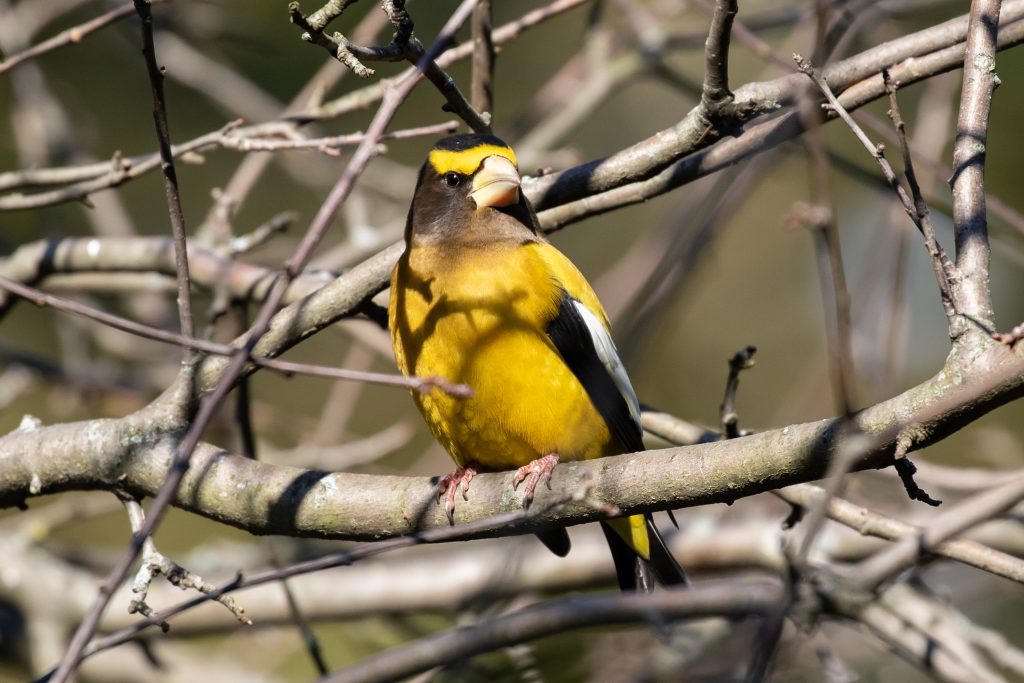
New York City birders eagerly anticipated an eventual flight into the five boroughs. Evening Grosbeaks were once a biennial occurrence in the city, especially from the 1950s to the 1980s; one estimate tallied 6,000 birds between the city and Northern NJ in 1951-1952, according to the bird’s entry in Urban Ornithology. The finches have been scarce in the city since the 1980s, mirroring declines across the East. Today, they occur far less frequently than the approximately biennial patterns observers noted during the bird’s population peak, and typically only as singles or a handful of birds.
But why care about New York? Though wildlife and New York City are hardly synonymous, the city’s diverse habitats along the Atlantic flyway concentrate hundreds of migrant and breeding bird species throughout the year. Meanwhile, the density of buildings forces migrants into just a few green spaces should they need to stop and refuel. Though it’s no Cape May or Tadoussac, New York’s status as a migrant trap makes its parks good places to observe large-scale bird movements in the East, such as finch irruptions. And of course, the juxtaposition of boreal birds and urban habitats is just downright cool. Of the irruptive Eastern finch species, only the far-northern pine grosbeaks and hoary redpoll went unreported this past winter; red crossbills, common redpolls, and pine siskins visited several of the city’s parks in large numbers.
After only a few reports in the days prior, the grosbeaks arrived dramatically in New York City on Halloween, 2020. Following a day of rain and a night of northerly winds, birders observed flocks of up to 15 birds at treetops and feeders in green spaces across four of the city’s five boroughs. Fall’s excitement was short-lived, however—reports dwindled into November, and none of the city’s Christmas Bird Count participants reported any Evening Grosbeaks at all.
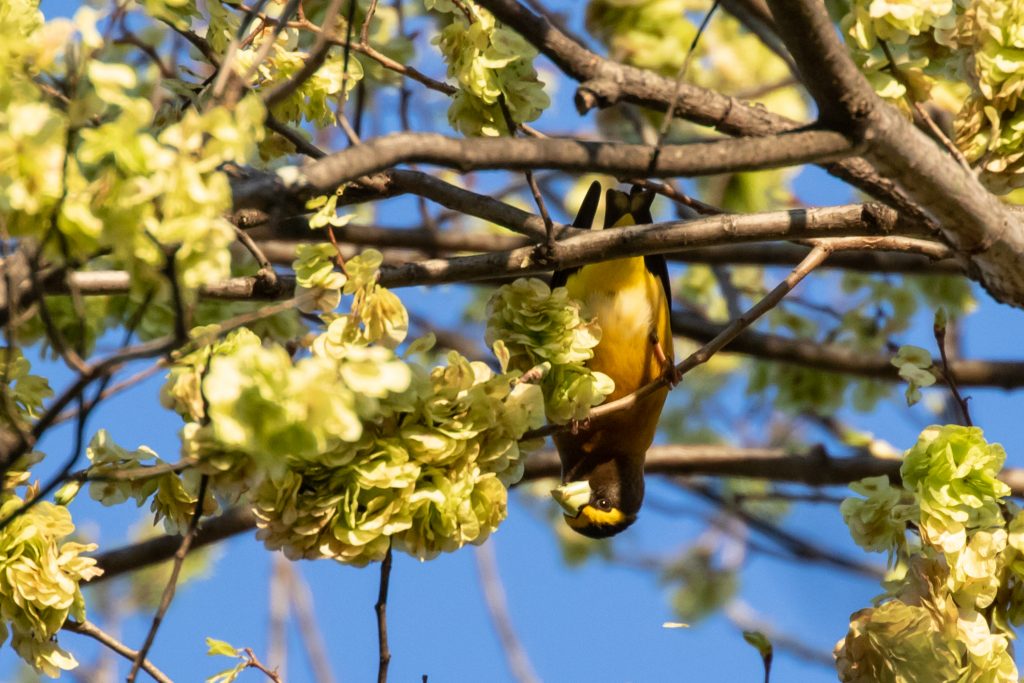
But New York’s stored spring migration was even better than the fall, as Evening Grosbeaks made their return flight to their northern breeding grounds. Single birds started showing up in mid April, and by the first week of May, the species was a nearly-expected fixture of eBird lists recorded in Prospect Park and Central Park, with flocks of up to ten birds flying over or feeding high in trees. Some birders were reporting storied “three-grosbeak days,” observing the irruptive Evening Grosbeak, the common Rose-Breasted Grosbeak, and the overshoot migrant Blue Grosbeak in the same park. Not to brag, but one morning, I had the three in the same tree. Based on eBird reports, the total number of birds passing through the city during this period likely numbered in the dozens.
New York’s Evening Grosbeak reports slowed and stopped as the birds returned to their breeding grounds around the expected time. But this past winter’s irruption offered ample opportunity for New York birders—myself included— to study this bird’s appearance, behavior, and vocalizations without having to travel to distant boreal habitats.
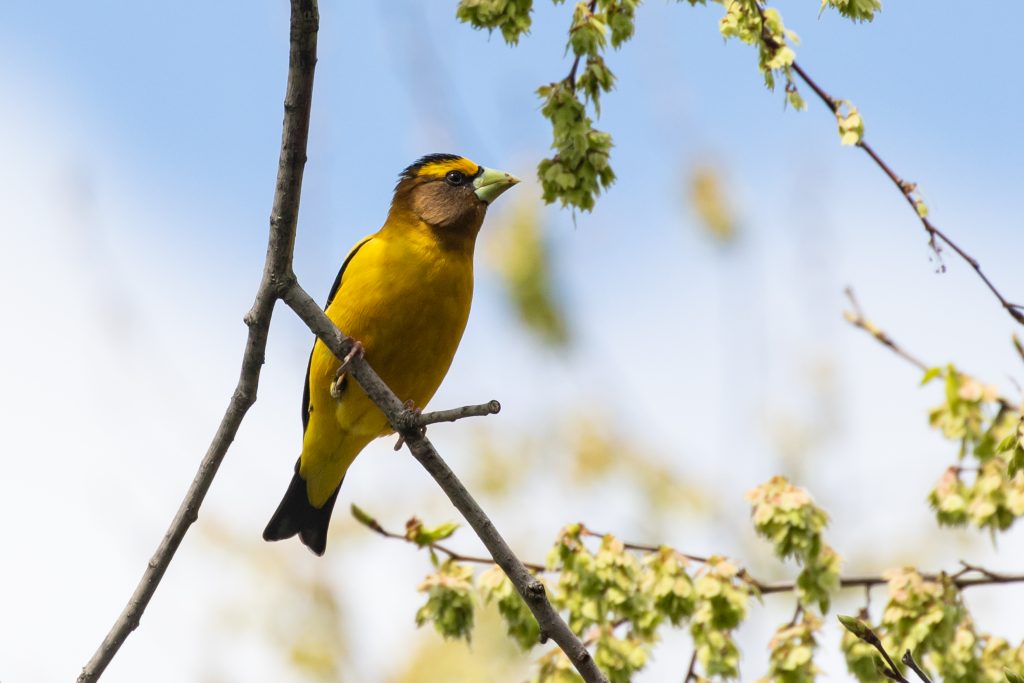
Though not quite the 6000-grosbeak year of yore, this year reminded me just how special living in New York as a birdwatcher can be. I only hope that this year marks the start of a more regular appearance of this threatened bird at wintering locations across the East.
Cover Photo Credit Jay McGowan
FiRN is a nonprofit, and has been granted 501c3 status. FiRN is committed to researching and protecting these birds and other threatened finch species like the Evening Grosbeak and Rosy-finches, and if you have been enjoying all the blogs and identifying of Red Crossbill call types, redpoll subspecies and green morph Pine Siskins FiRN has helped with, please think about supporting our efforts and making a small donation at the donate link below.

